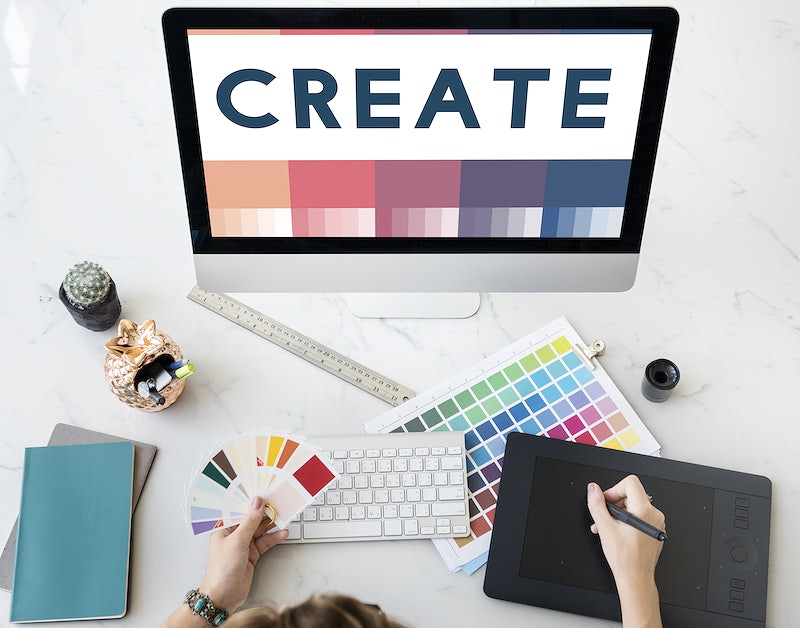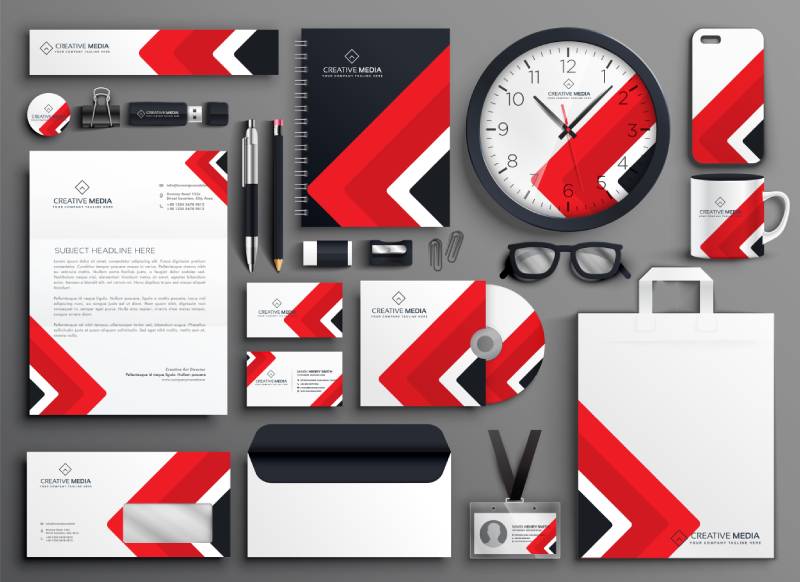blog
What is visual identity?

What is visual identity?
Visual identity refers to the visible presence of your company, which can be recognized by others through its design elements. It encompasses more than just a logo or a name, but also includes colors, fonts, and even phrases and verbal logos. Moreover, visual identity also refers to the way it is used in the company's activities.
Examples of visual identity can be seen in:
- The company headquarters, including furniture and offices that carry the visual identity of the company, even the walls.
- Official employee uniforms, such as specific clothes or neckties of certain color tones that promote the company's visual identity.
- The company's website, including its web pages and color schemes, as well as its social media accounts.
- The official mail and correspondences of the company, whether online or offline, which also includes standardizing the employees' email signatures, as well as sending letters on paper with envelopes that bear the company's visual identity.
- The company's printed materials, which include official documents, business cards, ID cards, company notebooks, envelopes, company papers, packaging bags and containers, as well as exhibition and advertising prints that have a significant impact during specific seasons, especially the gifts distributed to the company's clients.
Importance of visual identity for your business:
Once, some researchers conducted a test to determine the strength of the visual identities of the most famous brands in the world, such as Coca-Cola, McDonald's, Cadbury, etc. They removed the name, logo, and everything that indicated the brand identity, and asked users, "Who does this packaging belong to?" (Note: without a name, logo, or anything that indicates the identity). What were the results? The importance of visual identity was emphasized because the users could still identify the brand through its visual identity elements alone.
Benefits of Visual Identity
Visual identity enhances employee belonging
As much as a company invests in its visual identity, it gains internal belonging (pride) among employees. Humans tend to belong to a strong entity. Also, the company management should explain what visual identity is, why and how it was designed in this way, what strategy lies behind that identity, and what is the level of consistency between visual identity, the brand, and other matters that sow confidence in the hearts of employees and make them more confident in their leadership and more belonging to their company.
Visual communication is more effective
Going back to the experiment mentioned at the beginning, and how users recognize their favorite brands, without the need to read what is written on the cover, the visual reference of the brand is the most influential.
Protect your legal rights
In a commercial world full of mixed competitions (honest and dishonest), visual identity comes as a standard for distinguishing between good and bad in markets, and even to keep the company away from any illegal practices by parties and entities that exploit its commercial name and form of its trademark. Companies resort to creating a distinctive visual identity and registering it legally with the competent authorities in the state.
What are the elements of the brand you seek to build?
Who are you?
Not the direct definition of your company entity, but what image do you want to appear to the public? Do you like to appear in a luxurious and dignified appearance? Or a light and bold appearance? Or a friendly and pleasant appearance? Note that each personality has its own characteristics and considerations, and of course, its own audience.
Recognizing yourself will help you take the next step in the elements of visual identity, which is building the product that is suitable for presentation to the audience.
What is your product?
The product determines the type of audience targeted, the message you want to convey to this audience, as well as the language used, and based on that, the visual identity is formed.
Who is your audience?
Based on the image you have of yourself and the nature of the product you offer, you will determine which segment of the audience your product targets, their age, gender, interests, and other characteristics that help build the visual identity that suits them.
What is meant by visual identity coherence?

After understanding the elements of visual identity, the phase of taking care of the visual identity components themselves begins.
Logo: This is what your company will be primarily recognized by visually. If your company's logo is seen among a crowd of diverse visual logos, your company will be recognized and identified by who you are and what you offer. Nike's logo, the checkmark (✓), is a well-known example that identifies the company, even if the company name is not used with it.
Slogan: This is the phrase that will represent what you offer to the audience. It indicates the value that the audience gets by dealing with you. Referring back to Nike's company logo, we can find phrases like "Just Do It" that are exciting and motivational.
Color scheme: This is a deep art that is carefully taken care of by psychology. The appropriate color scheme for your business and what you offer to the audience should never be underestimated. White and blue colors are suitable for travel and tourism companies, hospitals, and health resorts. On the other hand, red, yellow, and brown are more suitable for restaurants. Black represents power, authority, and protection, so it is prominent with commercial brands that seek power.
Value: It is pointless, even foolish, to take care of all the previous elements and neglect the most important thing in building a strong brand, which is the value. All of the previous elements do not mean anything and do not represent anything unless they are linked to a high value that the audience strives for. The most obvious and clearest thing for you is to make sure that what you advocate for is represented in your visual identity. If you are advocating for strength, all of your products should reflect that.





Share your comment
Your email address will not be published. Mandatory fields are marked